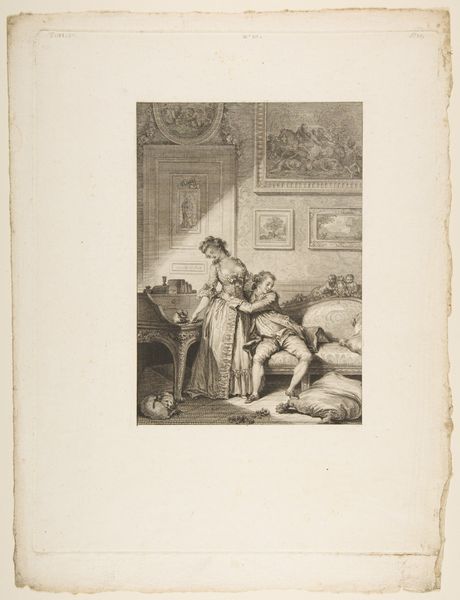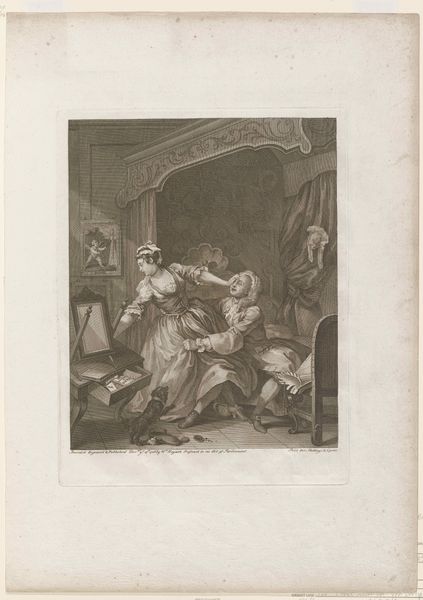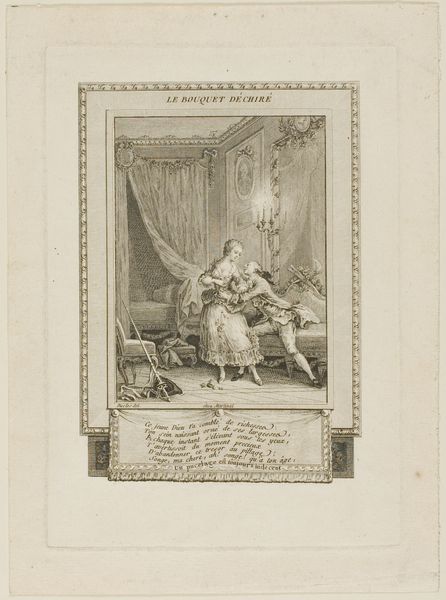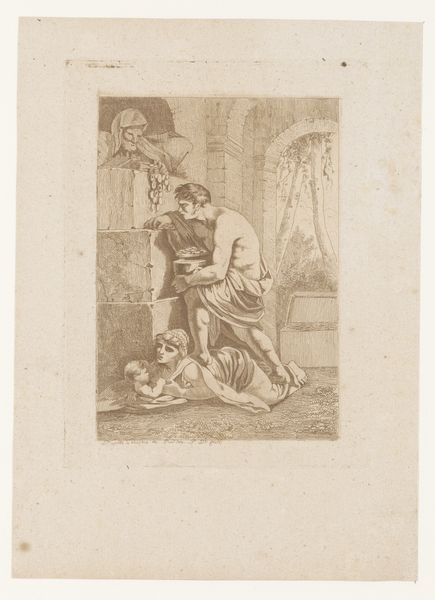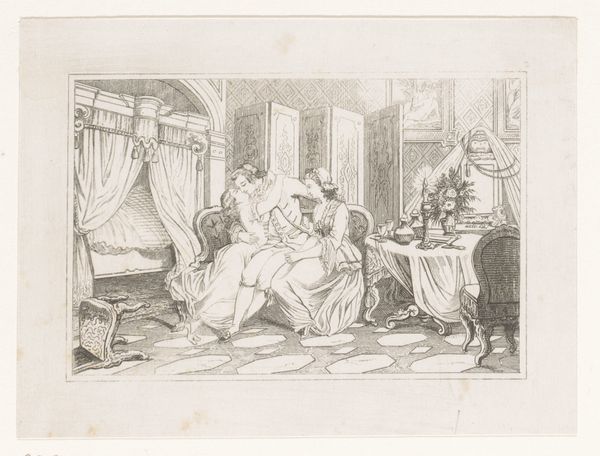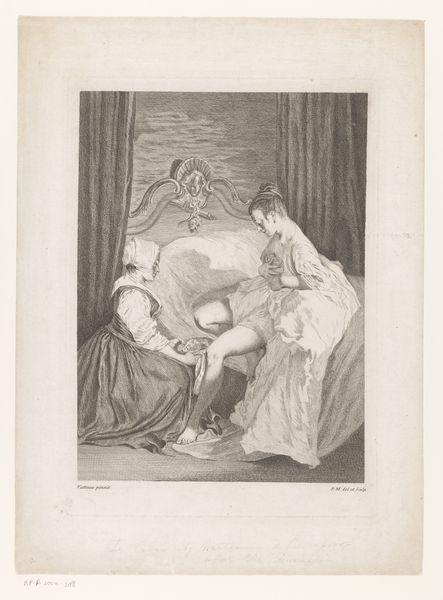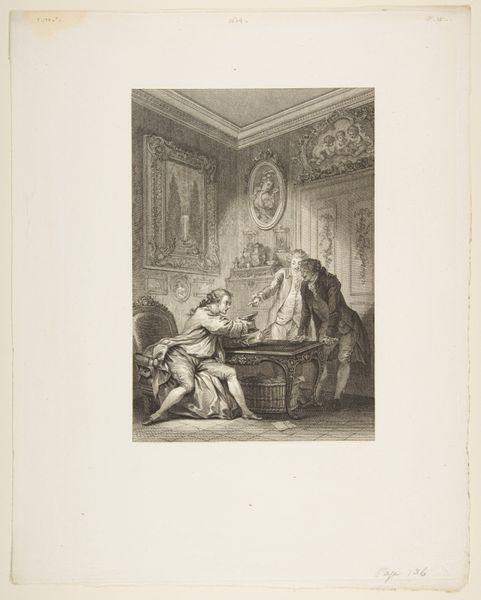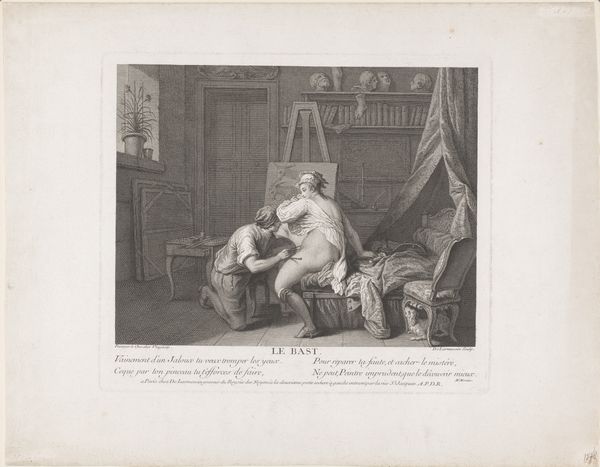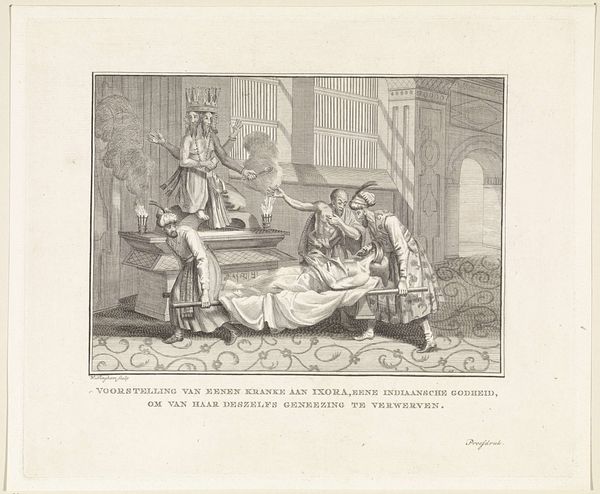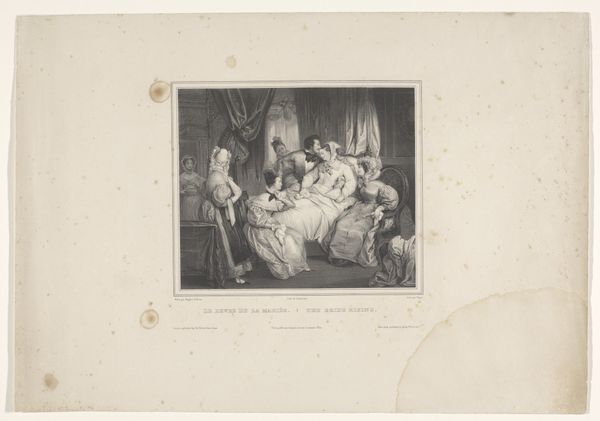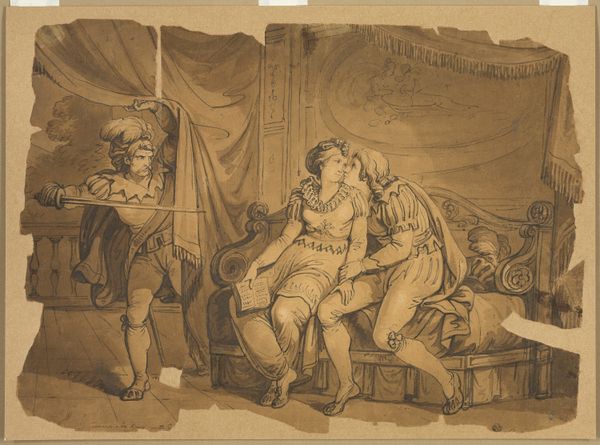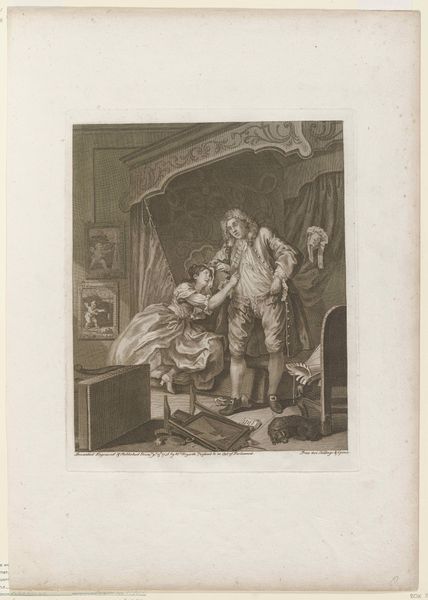
Dimensions: height 131 mm, width 170 mm
Copyright: Rijks Museum: Open Domain
Curator: Here, we have a rather intriguing etching entitled "Jonge man tilt de sluier op van een jonge vrouw," or "Young Man Lifting the Veil of a Young Woman." The work is attributed to Auguste Numans, dating from 1833 to 1880. What impressions strike you? Editor: It has a romantic, almost theatrical feel. The subdued light gives it a clandestine, secretive air, like we are witnessing a forbidden moment. Curator: Yes, the motif of the veil, particularly its removal, carries significant symbolic weight. Veils often represent modesty, mystery, and status, deeply entwined with societal expectations around women, haven't they? Editor: Exactly. Removing it—it's not just about seeing, is it? It suggests revelation, a crossing of boundaries. This isn't simply a physical unveiling. It also touches upon themes of intimacy and power dynamics. Who gets to see and who remains hidden. Curator: That’s quite insightful. In many cultures, the unveiling has historically been linked to marriage rituals, symbolizing the bride entering a new stage of life, now visible to her husband. Numans, by positioning this act within an intricate interior setting—notice the decorative arches—infuses it with historical echoes and perhaps an element of the exotic. Editor: And let's not ignore the silent figure in the background! A rather judgemental one I think. His presence heightens the drama. He seems to embody tradition, silently observing the disruption or maybe acceptance of the unveiled woman. Curator: Precisely! His role begs questions about consent, spectatorship, and shifting social norms of that era. The romantic era often grappled with tensions between individual desire and social constraints. Editor: Well, that kind of silent observation always makes me wonder what everyone's really thinking, beneath those seemingly serene exteriors! Numans's etching, for all its apparent delicacy, presents quite a bold commentary about intimacy and the society looking in on it. Curator: Absolutely, making it more than a quaint period piece. I find myself pondering still its delicate composition. It’s quite an intense encounter portrayed using a delicate, intricate style, no? Editor: Yes, and those quiet intensities are often the most lasting. I shall have a good think about that.
Comments
No comments
Be the first to comment and join the conversation on the ultimate creative platform.
